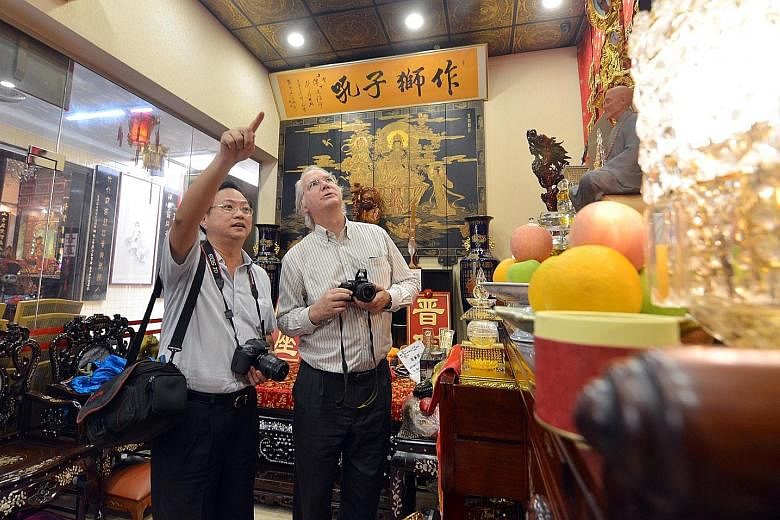Telling stories of Singapore's past, 1,300 Chinese inscriptions carved on stone and wooden tablets, some two centuries old, have been documented as part of a unique research project.
The stories, now on official record, include accounts such as how the 1828 Heng San Ting temple and cemetery in Silat Road had started taxing boat captains to cover the burial fees of sailors, many of whom had died in early Singapore when gangsters were rife and diseases thrived.
This little-known detail, from one of Singapore's oldest and now defunct temples, was inscribed in Chinese on a wooden slab dated 1836.
Professor Kenneth Dean, who pounded the ground for four years to recover the lost data, alongside research fellow Dr Hue Guan Thye, said: "The history of Singapore has been written from the colonial archives and from the nation-building perspective. So for us, the question was: What has been left out of the Singapore story? We dedicated our resources to build our own new and accessible archive."
The duo from the National University of Singapore's (NUS) Department of Chinese Studies described the epigraphic records as untapped historical resources.
As they are written in ancient Chinese and calligraphy styles, these 1819 to 1911 inscriptions are usually ignored and incomprehensible to the average visitor. So the pair set out to record, photograph, analyse and translate these inscriptions into English.
Their effort, covering 63 Buddhist and Taoist temples, clans and guild houses, culminates in two volumes called Chinese Epigraphy in Singapore, 1819-1911. The books went on sale via NUS Press last Tuesday and feature descriptions of temple iconography, art and cultural artefacts; explanations of rituals; and write-ups on their history.
Other highlights in the book include inscriptions from Thian Hock Keng temple, which was established in Telok Ayer in 1842.
A stone slab, carved and erected in 1850, bears the names of regional contributors to the monument's construction, including boat captains and merchants.
Prof Dean said such inscriptions provide snippets of what life was like in 19th and early 20th century Singapore, and capture the diverse cross-section of society at that time.
He added: "We hope schools and public libraries will take the books in, so Singaporeans will have access to this rich, first-hand material to build on."
The researchers' next aim is to produce other volumes on the country's modern temples.
These places continue to provide "the underpinning for cultural life" for Buddhist and Taoist Singaporeans, said Prof Dean.
Temples today have on average between 500 and 1,000 followers, and some cater to hundreds of thousands of people during festivals.
The duo are also building interactive maps and charting the historical and ongoing movements of Singapore's over 1,000 temples, other religious institutions, clans, cemeteries, and kampungs in a digitisation effort with the NUS Geography Department.
Prof Dean, who is agnostic, and Dr Hue, a Buddhist, hope Singaporeans will also send in photos and records of the temples and kampungs they are familiar with, for their website.
Dr Hue said that while the task is a mammoth one, the duo will continue to "work tirelessly".
He said: "It is a very meaningful project as it is about finding our roots and developing resources for the cultural heritage of Singapore."
They can be contacted at chshead@nus.edu.sg


